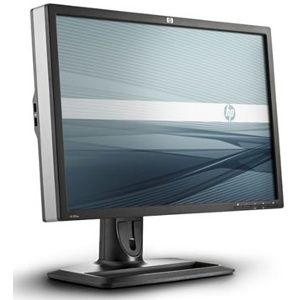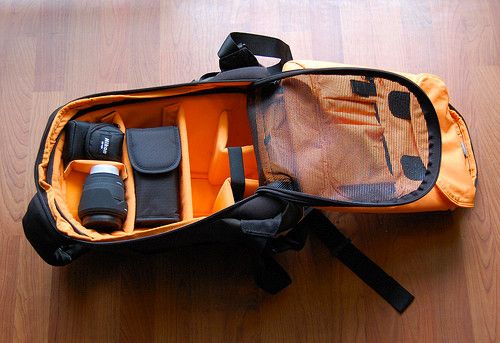Laptops are small, light and portable. They are also, in a strange twist of fate, often far more uncomfortable than the bulky desktops they replace. Being forced to place the screen, touchpad and keyboard in a compact box creates all sorts of ergonomic issues. And then there’s the matter of carrying it around.
Using a laptop as your primary PC doesn’t demand that you sacrifice comfort, however. The problems they cause can mostly be resolved. Let’s look at five easy laptop ergonomics tips to take make sure your laptop doesn’t become a pain in your, uh, back.
Use A Laptop Stand With A Keyboard & Mouse
If you are using your laptop at home or work it will likely sit at a desk. This can cause ergonomic problems even if you own a nice ergonomic chair. The display will sit too low and the keyboard will not be at an optimal angle. Laptop users often find themselves hunching to compensate.
You can solve this by purchasing a laptop stand and using an external keyboard. Look for a stand that is adjustable, as positioning will depend on your height. It’s also wise to place the keyboard in a keyboard tray that can be attached to your desk. This keeps your wrists at a neutral angle that prevents excess strain.
A mouse is also a good idea. A small, portable mouse can be used in a variety of positions that are much more ergonomic than the touchpad on your keyboard. Mouse buttons also tend to be more precise and easier to use than those on a touchpad, which reduces repetitive or forceful clicking.
Use An External Monitor
Before you buy a laptop you should think about its display. Manufacturers are currently pushing high-resolution displays because they provide a crisp picture that’s visually superior to competitors. However, a high-resolution display can also cause problems with scaling. Some text and images may appear very small, which can cause users to strain or hunch in an attempt to clearly read what’s displayed.
This is why an external monitor is a great idea if you are using your laptop at home or work frequently. A large, 22 to 30 inch monitor can display text clearly while also providing plenty of pixels to work with. This will also likely solve the height issue previously discussed, which means you won’t need to buy a stand. An external keyboard is still a good idea, however.
Resist Terrible Seating
Part of a laptop’s allure is portable computing. Users can work while in an airport, at a coffee shop or waiting at a doctor’s office. There’s no way to control what seating is available in these locations, of course, but it is possible to pick the best of the bunch.
The most ergonomic public seating is usually a simple, straight-back wooden chair. They aren’t plush but their lack of padding persuades a straight back rather than a hunched or slumped position. A standard plastic chair or even a bar stool can be a decent substitute.
Avoid comfy couches, loveseats or decorative chairs. These feel great at first but almost always lack anything resembling back support. Most people slump, hunch or half-heartedly recline, all of which can cause back issues with surprising speed.
The only exception to this is a recliner with a straight back. Chairs like this usually do a good job of spreading the load across a user’s back, bottom and thighs. Even then, approach a strange chair cautiously. Stand up after ten minutes of use to see if it's starting to cause any discomfort.
Stretch
The human body was not meant to spend long periods of time sitting – and not just because of back issues. Our entire bodies tense up as our muscles lose flexibility. It’s easy to accidentally “throw out” an arm or leg after spending several hours sitting still.
Stretching is an easy solution. It’s generally a good idea to stand up and move about for at least five minutes after every hour of work sitting down. There are a lot of places to find tips on stretches, but my favorite guide is the one published by the University of Toronto. Just don’t do the one where you stick your tongue out if anyone is around.
Carry Your Laptop In A Backpack
Backpacks aren’t that cool. They’re generally for kids or hikers, which is why so many people avoid them. Businessmen prefer rolling suitcases or briefcases while students prefer a variety of single-strap messenger bags.
Unfortunately, those options aren’t ergonomic. Rolling suitcases often cause people to walk in a hunched or leaning position, briefcases place strain on the arm and hand and messenger bags distribute an entire bag’s weight over one shoulder.
A good backpack is the way to go. It distributes weight evenly across two shoulders and can be adjusted to ensure a snug, secure fit. Most also come with a buffet of pockets, crannies and knocks for storing various peripherals. Make sure to buy a laptop bag with a separate, padded compartment.
Conclusion
Ergonomic laptop use is a bit more difficult than desktop use, which is already enough of a challenge. But it’s far from impossible. With a laptop stand, a keyboard, a backpack and these tips it’s not hard to stay healthy and pain-free.
Image Credit: Guillermo Esteves, Kim Faires, John Bieler, Kars Alfrink






